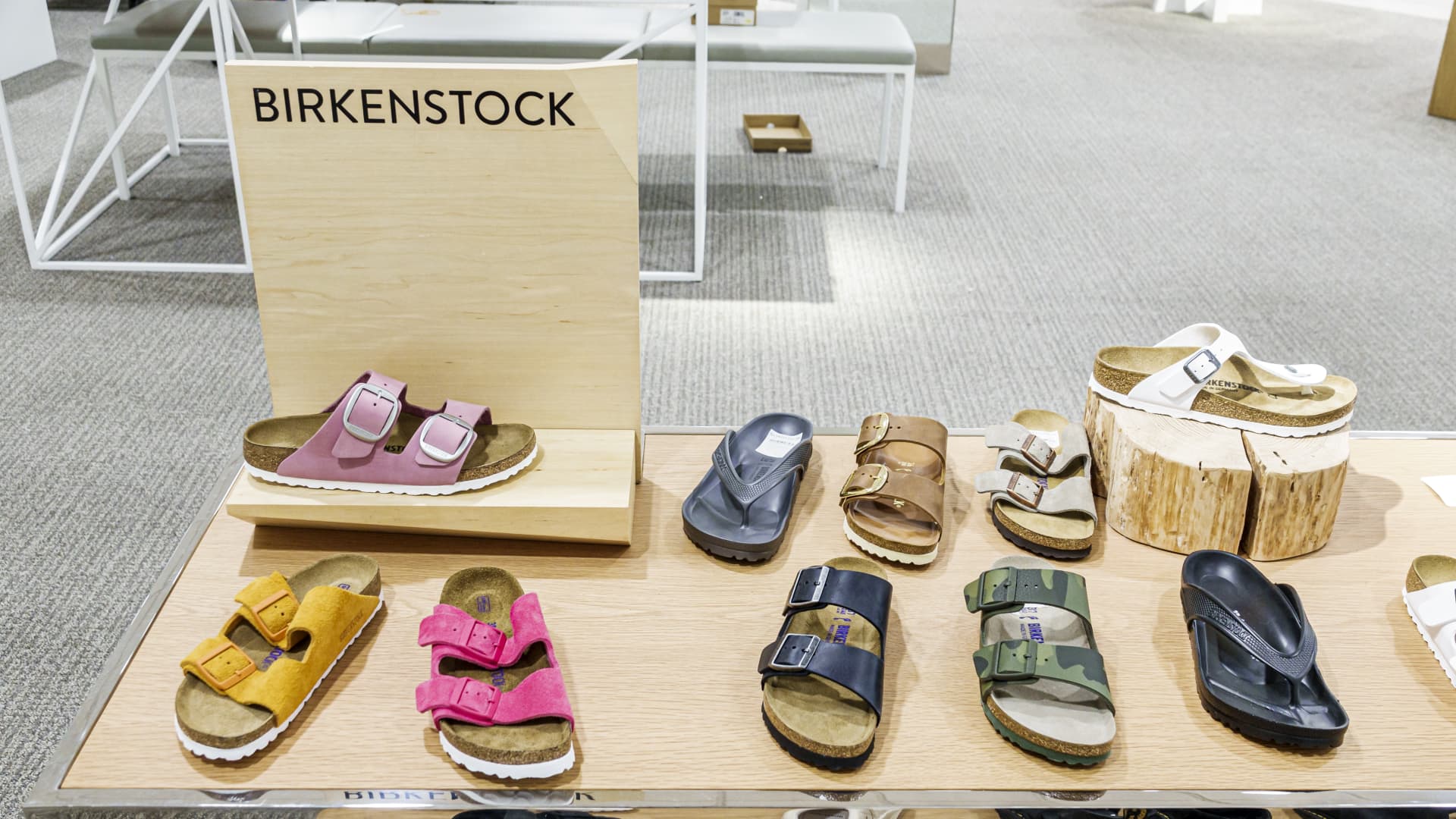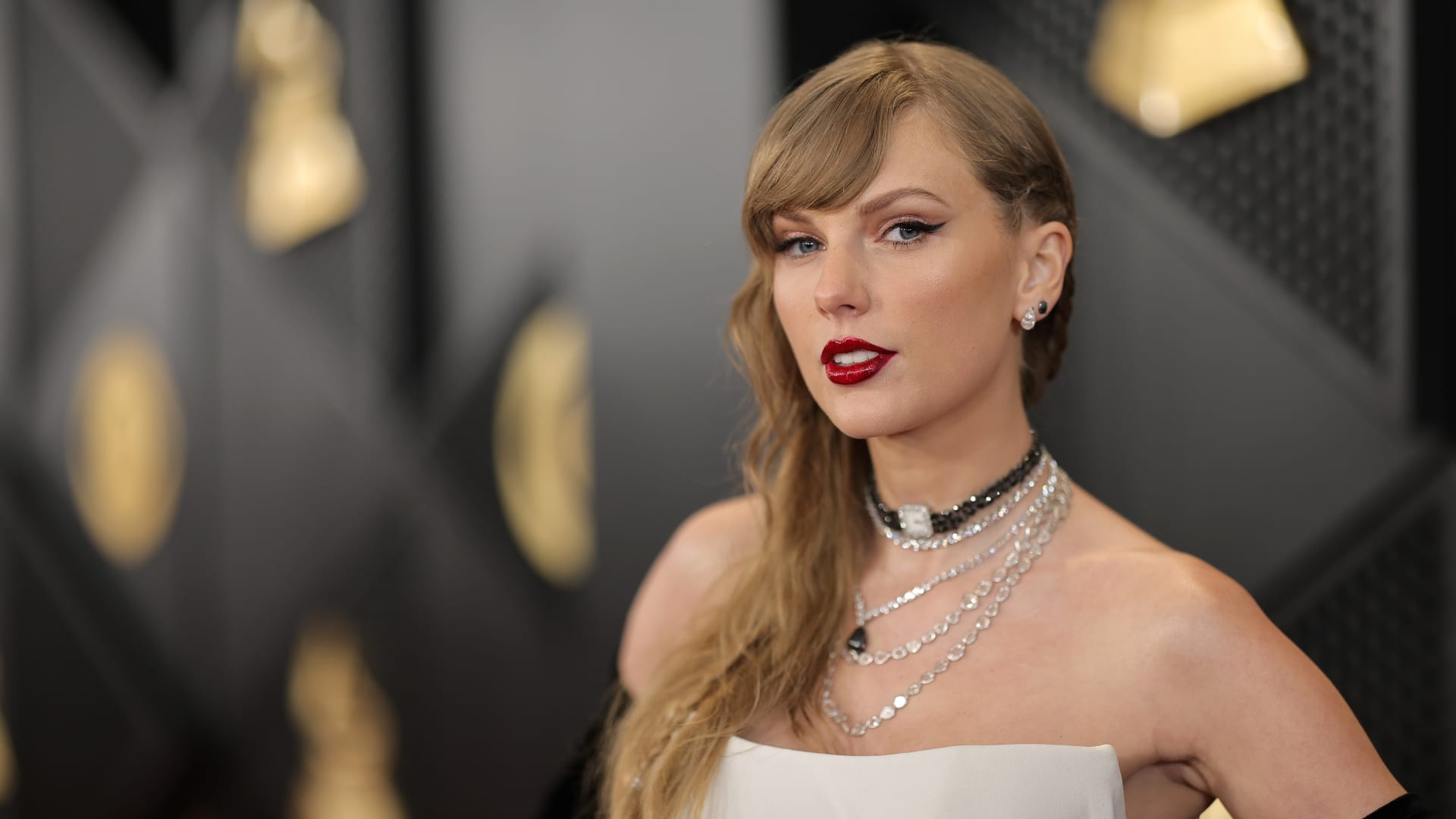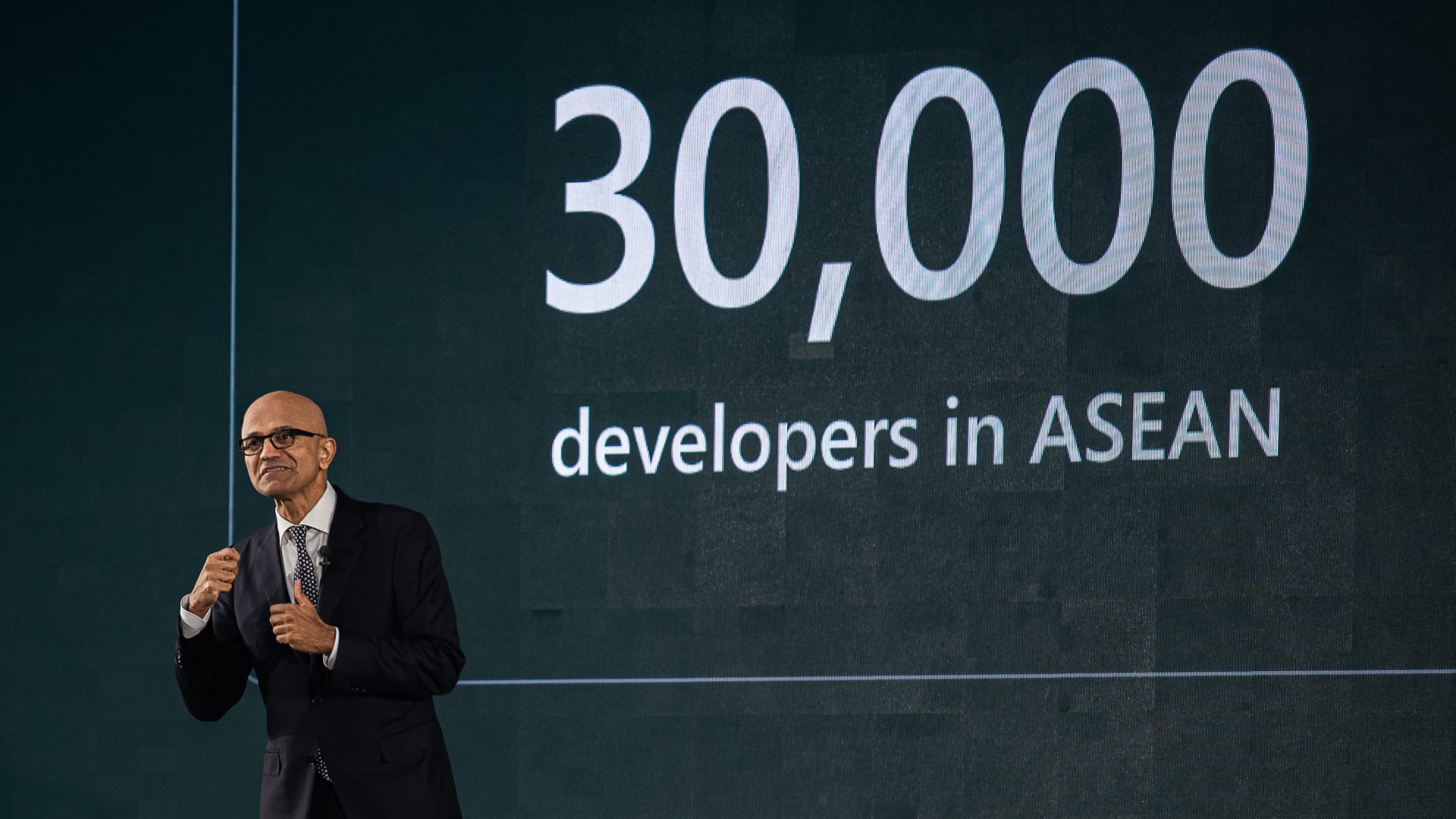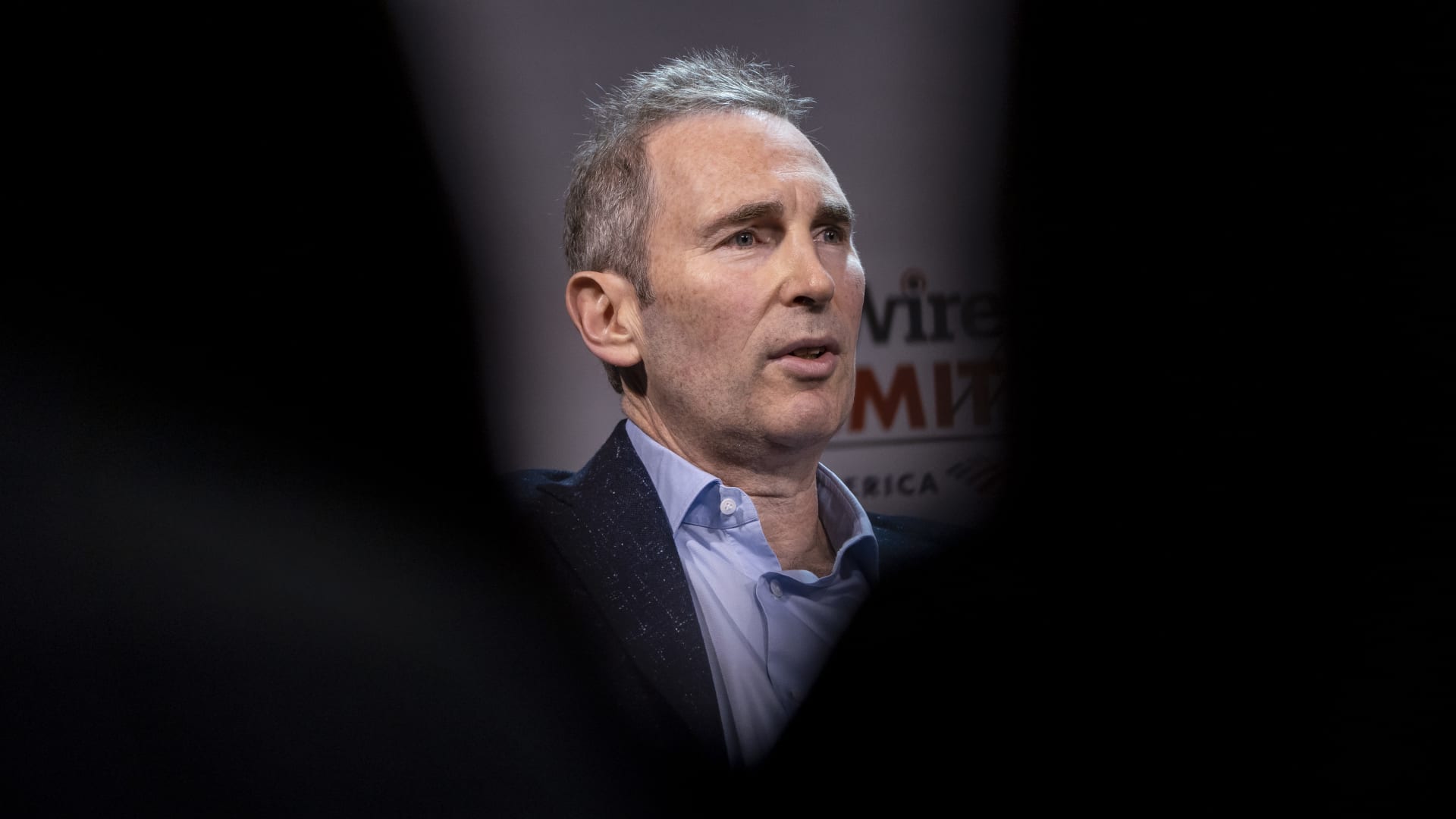
Nordstrom department store display of Birkenstock sandals at the Shops at Merrick Park, Miami.
Jeff Greenberg | Universal Images Group | Getty Images
Birkenstock, the iconic footwear company that dates back to the 18th century, made official on Tuesday what’s been rumored in the press for months: it is planning an initial public offering.
The company filed its IPO registration statement on Tuesday afternoon.
The deal, which comes over two years after the Birkenstock family sold a majority stake in the company to LVMH-affiliated private equity firm L Catterton, is drawing attention for the growth it’s seen since the investor buyout, and a bump for the brand after its recent cameo in the wildly popular movie “Barbie.”
Birkenstock, which began as a single shoemaker in Germany named Johann Adam Birkenstock, now plans to IPO with an $8 billion valuation. Birkenstock moved away from its long-held family ownership structure in 2021, when L Catterton, an LVMH-backed private equity firm, acquired majority stake in the company. At the time, the deal valued the brand at $4.85 billion.
Annual revenue has increased from roughly $781 million in 2020 to over $1.3 billion in 2022, a 31% annual growth rate. The IPO filing did not include a potential valuation, but it disclosed that net revenue for the six months ended March 31 rose 19% to $692.9 million, though profit declined compared to the year-ago six-month period by 45.3%.
Birkenstock plans to trade under the “BIRK” ticker on the New York Stock Exchange.
Recent press reports have suggested the company could be valued at nearly $8 billion. Over the summer, L Catterton’s beauty firm Oddity rose 40% in its Nasdaq debut, but it’s down over 20% for the year since its first day of trading. Footwear companies have found recent success going public market, but not all by any means over the longer-term. Crocs, Skechers and Deckers Outdoor are all examples of footwear stocks that have done well — but Allbirds and On Holding have struggled.
“Looking at comparable companies trading very well this year probably encourages Birkenstock, and maybe some other fashion names to go public,” said Angelo Bochanis, IPO analyst at Renaissance Capital.
“Consumers buy our products for a thousand wrong reasons,” stated Birkenstock CEO Oliver Reichert in the IPO prospectus. “But they all come back … Through the strong reputation and universal appeal of our brand — enabling extensive word-of-mouth exposure and outsized earned media value — we have efficiently built a growing global fanbase of millions of consumers that uniquely transcends geography, gender, age and income,” Reichert said.
Birkenstock and L Catterton declined to comment.
From village shoemaker to cultural icon
The first record of the Birkenstock name in connection with the footwear industry was in 1774, when Johann Adam Birkenstock is recorded as a “subject and cobbler” in his German village. Konrad Birkenstock, grandson of Johann, followed in his grandfather’s footsteps, crafting the world’s first footbed with contoured arch support in 1902. He would later sell flexible arch support inserts to German shoe manufacturers. The first Birkenstock sandal was created in 1963 by Karl, the grandson of Konrad. In 1966, the iconic shoe was brought to America by Margo Fraser, a German dressmaker who lived in California. This is likely where the brand’s “hippie” associations first came to be – the shoes were primarily stocked by health food stores.
Birkenstock’s first foray into high fashion was through a shoot photographed by Kim Knott for British Elle in 1985. Five years later, the shoes became even more entrenched in America’s fashion consciousness when iconic model Kate Moss wore them during her cover shoot for The Face (shot by Corinne Day). In more recent history, the brand has collaborated with Rick Owens, Dior, and Manolo Blahnik, among many other big names in fashion.
Jeremy Moeller | Getty Images Entertainment | Getty Images
The company’s latest publicity driver may be the biggest of all: the brand’s Arizona sandal has a prominent role in this summer’s blockbuster billion-dollar film “Barbie.” In the movie, Barbie (played by Margot Robbie) is forced to choose between pursuing knowledge of the “real world” – the Birkenstock – or returning to a state of ignorance – an unbranded stiletto. Though Barbie attempts to choose the stiletto, she eventually chooses the Birkenstock, and goes on to learn the truth about the human world. At the end of the movie, Barbie is depicted in the real world wearing a pair of pink Birkenstocks.
The current IPO market landscape
The IPO market has been all but frozen since the pandemic stock offering boom crashed, and successful IPOs have included iconic brands, such as the Johnson & Johnson spinoff of its consumer health business which includes Tylenol and band-Aids in the Kenvue IPO.
Brand recognition that Birkenstock has built during its nearly 250 years of existence bodes well for the upcoming IPO, according to Bochanis.
“IPO investors right now are looking for something they’re familiar with, something that is a little bit more predictable in these unusual times,” he said. “We haven’t seen a whole lot of very flashy, pre-profitable enterprise software companies go public. What we’re seeing instead are names that people are familiar with, business propositions that can really withstand these tougher environments and Birkenstock fits the bill. I mean, it’s nearly 250 years old. It’s a company everyone knows.”
Still, while Kenvue was the biggest deal of the year, it’s barely holding onto its IPO price today, according to CNBC and Renaissance Capital data, and the IPO market overall hasn’t performed great after listing. Sixty-four percent — or 45 out of 70 IPOs year-to-date — are trading below their IPO price. Most of those deals have been at the smaller end of the market caps, and even the tech sector, hit hardest in the IPO freeze, is now pushing ahead, with chip giant Arm and grocery startup Instacart planning to go public this week and next.
Retail stocks have underperformed this year
“Birkenstock is in a class of its own,” said Mark Cohen, director of retail studies at Columbia Business School. “It’s a long-standing brand, it’s been around for a very long time. It’s very well known, it has a niche customer who appreciates its brand equity, its shape, and finish and styling and comfort.”
But Cohen says investors shouldn’t bank on its success as a new publicly traded stock.
Covid-19 brought significant and abrupt change to the retail industry, but many of those changes have been upended again as the pandemic wanes. The course of inflation, meanwhile, will continue to influence consumer spending in the near-term. Most consumers have had no experience as adults dealing with inflation, Cohen said. “We’re dealing with a very odd series of events that continue coming out of Covid,” he added.
Add to the list of risks the rise of knockoff Birkenstock products on Facebook, which the company pointed to in its IPO filing.
While inflation has come down from its peak, there are signs that it will persist, and consumers tend to cut back on discretionary spending in this kind of environment. Credit concerns have also hit a level not seen since 2009. Even as Wall Street firms lower the odds of a recession hitting, it’s still a risk with significant consumer implications, though maybe not a risk that will hit soon enough to dent current IPO enthusiasm.
JPMorgan CEO Jamie Dimon said earlier this week that while the U.S. economy is doing well, it would be risky to believe that it will last for years. “To say the consumer is strong today, meaning you are going to have a booming environment for years, is a huge mistake,” Dimon said. “If and when you have a recession, which you’re eventually going to have, you’ll have a real normal credit cycle,” Dimon added. “In a normal credit cycle, something always does worse than” expected.
But for now, consumer sentiment remains high, Bochanis said, “but if that were to dramatically change, if the small possibility that we have a rough landing manifests, then that could seriously impact discretionary spending.”
“Most retail stocks are not anywhere near their recent high water marks,” Cohen said. “There’s a lot of cynicism in the market, in general, and retail is no different.”
The S&P SPDR Retail ETF is up roughly 3% this year, but it’s far off the pace set by the S&P 500, and it is down over 6% in the past month.
The next Crocs or Allbirds?
The two potential paths of a footwear IPO can be tracked by the histories of Crocs and Allbirds.
Though its shares been been under pressure this year, Crocs, which went public in 2006, has gained significantly over the course of its stock market history since it began trading at $21. Like Birkenstock, the brand has successfully collaborated with various designers, including Balenciaga, and also relies on a loyal customer base that appreciates the comfort of the product.
Loading chart…
Allbirds, which went public in 2021, also opened around $21 but has traded down to near the $1 range.
“This is a movie that doesn’t always have a wonderful ending,” Cohen said. “Recent example: the creation of Allbirds. Wildly successful, kind of a one-trick pony, but very successful, very popular. Company goes public.”
Loading chart…
But Allbirds, he said, sought too much growth, in too many areas.
“The leadership, whether pushed by their investors, or because they were flush with cash, proceeded to try to line extend the brand, and train wreck the company. And now we’re in the process of retrenchment,” Cohen said. “They expanded their offerings to apparel and accessories beyond shoes, assuming that consumers would be equally as interested in purchasing these products. … turned out to be definitely not the case,” he said.
Birkenstock has expanded beyond its core footwear products, into skincare, accessories and sleep systems. And it faces — and details under the IPO risk factors — all the challenges that consumer brands can’t escape: a consumer base whose preferences cannot be predicted with certainty; a single, discretionary product category vulnerable to sudden changes in consumer trends and spending; the need to innovate at a rapid pace to keep up with style shifts and amid intense competitive pressures; and the need to not only find new customers but retain current customers who represent a significant percentage of revenue.
Birkenstock says its direct sales channel, increasingly important to brands in a changing retail landscape and era of e-commerce, has been growing, from 30% of revenue in fiscal 2020 to 38% of revenue in fiscal 2022, with a particular focus on the U.S. The average Birkenstock consumer in the U.S. owns 3.6 pairs, according to data the company cited in the IPO document. It sees significant room for growth globally in a footwear market that generates over $350 billion in annual retail sales and where the top five brands account for 20% of the market, especially in the Asia-Pacific region. “Based on our current market penetration of less than 1%, we believe there is ample whitespace to continue growing the Birkenstock brand,” it said in the IPO prospectus.
But retail is a highly unpredictable market, and that has its plusses and minuses.
“The beauty of retail is every day is a new day. The bane of retail is every day’s a new day,” Cohen said. “Today’s success does not foretell tomorrow’s results – you have to earn your keep on a constant basis.”





